Whether “mung bean soup” is green or red depends on an ingredient in the soup.
Polyphenols in mung beans.
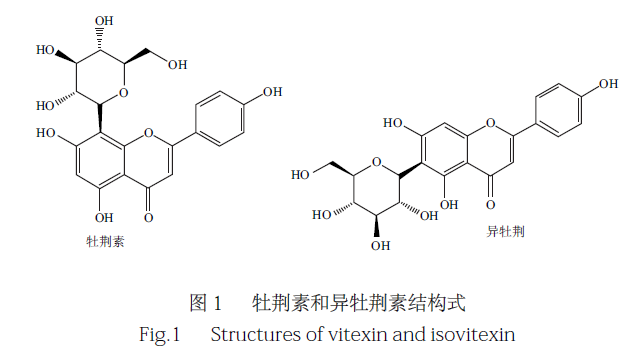
When the mung bean soup is cooked, the polyphenols will change, and the mung bean soup will also change from green to red at the beginning.
There are also two types of changes in polyphenols.
The first is that the polyphenols are oxidized.
Oxidized polyphenols absorb a change in the wavelength of light, so the color displayed changes.
For example, cut apples turn brown after a long time, tea turns red after a long time, and small black spots appear in dough that has been left for a long time, all of which are examples of polyphenols being oxidized and discolored.
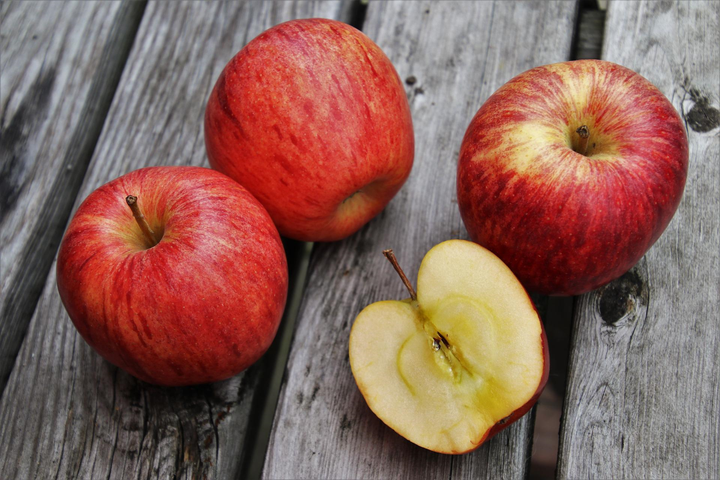
The second case is the complexation reaction between polyphenol and metal ions .
Interestingly, there was a debate on the color of mung bean soup on Zhihu before. Some people said that it was yellow-green when it was boiled, and some said that it was orange-red when it was boiled.
And this color is also divided into regions, and the colors cooked in different regions are different.
In fact, this is the reason for the difference in local water quality.
In some places, the water quality is softer and there are fewer metal ions, so the boiled mung bean soup is the original color.
In places where the water quality is relatively hard, the iron ions and polyphenols in the water undergo a complex reaction, and the mung bean soup turns orange-red.
Is the discolored mung bean soup still drinkable?
The change in color does not have much impact on safety, because the process of discoloration does not produce harmful substances.
From the perspective of efficacy, the antioxidant and hypolipidemic capabilities of mung bean soup after discoloration have decreased to a certain extent , because the functional components (polyphenols and flavonoids) in it have been lost to varying degrees.
Mung bean soup, or drink green nutrition.
How to cook mung bean soup?
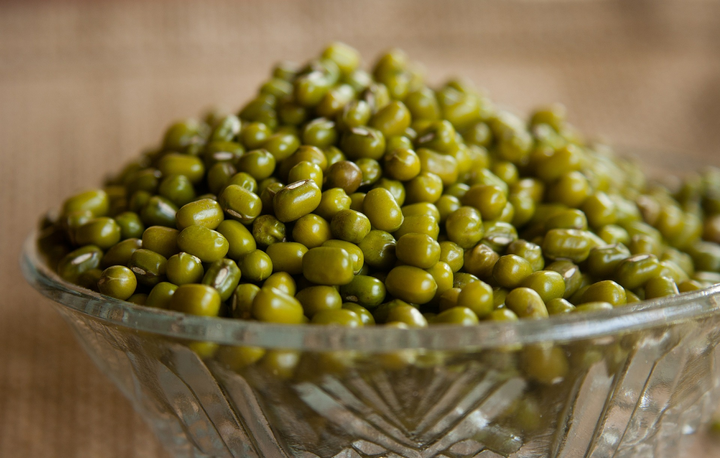
1. Control the time
When cooking mung bean soup, you can put a small amount of water first, and cover the pot to reduce oxygen contact with the soup. After about 10 minutes of simmering, the soup turned turquoise.
The mung bean soup at this time is the most beneficial , because the polyphenols and flavonoids in the skin of mung bean are basically dissolved, and because the cooking time is short, the degree of oxidation is also the lowest.
Therefore, you can pour these green soups out and drink them separately, and then add water to the mung beans and cook until the mung beans become rotten into mung bean porridge.
A mung bean soup, a mung bean porridge, in this way, nutrition and deliciousness will not be delayed.
2. No alkali, no sugar
Studies have shown that adding alkali will increase the pH of mung bean soup, making it easier to destroy the flavonoids and polyphenols in it, and reducing the nutritional value (antioxidant activity) of mung bean soup.
At the same time, adding alkali will also destroy a variety of B vitamins in it.
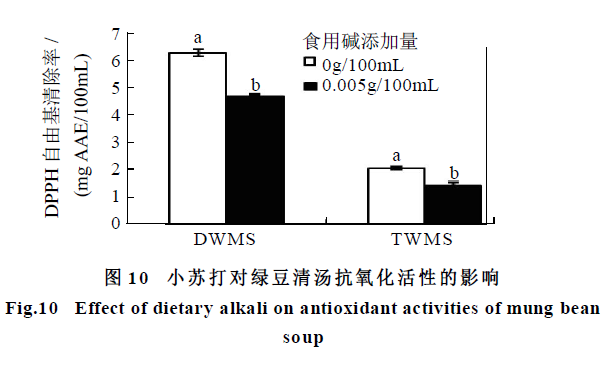
For nutritional reasons, if you just want to make the mung bean soup thicker, you should not add alkali. You can consider adding some starch, or foods such as oats and glutinous rice.
What about adding sugar, can’t you just add sugar? Are we drinking mung bean syrup for so many years for nothing?
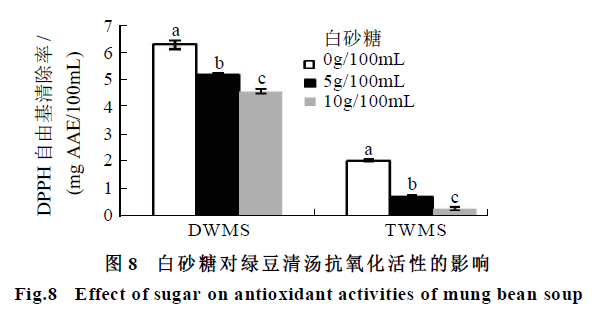
Looking at the picture, the more sugar added, the lower the antioxidant activity.
Adding too much sugar will increase the osmotic pressure of mung bean soup, and polyphenols and flavonoids will not be easily dissolved from the skin of mung bean. In addition, sugar molecules may also interact with phenolic substances, resulting in reduced nutritional value of mung bean soup.
Of course, the tasteless mung bean soup is really bad. Taking into account both nutrition and deliciousness, when the owner cooks by himself, he will add a small amount of sugar to taste after the mung bean soup is cooked.
3. Distilled water + casserole
The main purpose here is to minimize the metal ions in the mung bean soup and avoid the complex reaction between these ions and polyphenols.
The above two data graphs can see the difference between distilled water (DWMS) and tap water (TWMS). If you have the conditions, try to use distilled water.
There are also utensils for cooking soup, which will also have a certain impact. It is also recommended to choose non-metal utensils such as casserole as much as possible.
–thanks for reading.
references
- Chen Ran, Zhao Jianjing , Fan Zhihong. (2012). Effects of cooking conditions on the color and antioxidant activity of mung bean clear soup. Food Science , 33: 115-120.
- Chen Ran, Wang Jing, Wan Haijing, Zhao Jianjing, Fan Zhihong. (2014). Effects of cooking water pH and metal ions on mung bean clear soup. Food Science , 35:96-99.
Source: Zhihu www.zhihu.com
Author: Zhihu user (login to view details)
[Zhihu Daily] The choice of tens of millions of users, to be the new thing in the circle of friends and share the big cow.
click to download
There are 43 more answers to this question, see all.
Further reading:
Why does mung bean porridge turn red when boiled with tap water?
Why do mung beans taste better after being frozen and boiled?
This article is reproduced from: http://www.zhihu.com/question/539023926/answer/2561210507?utm_campaign=rss&utm_medium=rss&utm_source=rss&utm_content=title
This site is for inclusion only, and the copyright belongs to the original author.